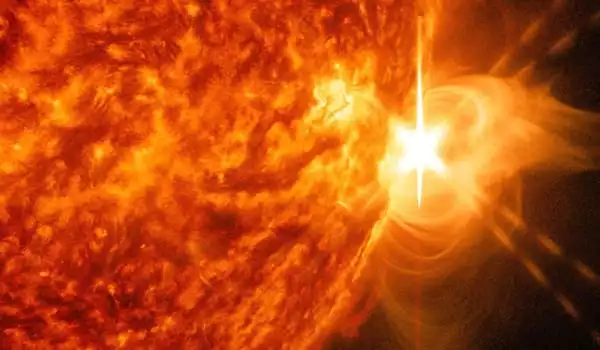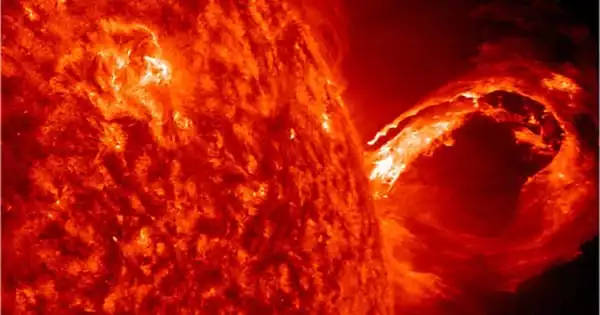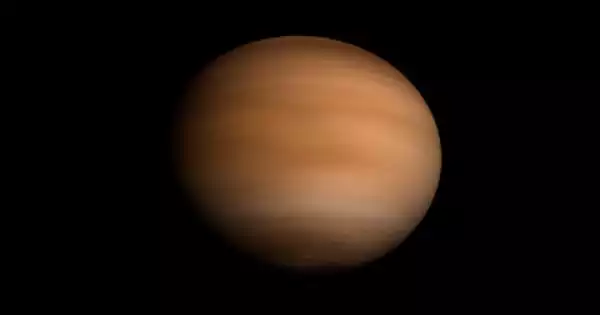The sun is a common star, one of approximately 100 billion in our galaxy, the Milky Way. The sun has a huge impact on our planet: it governs weather, ocean currents, seasons, and climate, and it allows plant life to exist through photosynthesis. The sun’s activity has been increasing at a much higher rate than experts predicted.
A massive plasma wave blasted from the sun collided with Mercury, causing a geomagnetic storm and scouring material from the planet’s surface. The powerful eruption, known as a coronal mass ejection (CME), was seen emanating from the sun’s far side on the evening and took less than a day to strike the closest planet to our star, where it may have created a temporary atmosphere and even added material to Mercury’s comet-like tail, according to SpaceWeather.com.
The plasma wave came from a sunspot — areas on the outside of the sun where powerful magnetic fields, created by the flow of electric charges, get knotted up before suddenly snapping. The energy from this snapping process is released in the form of radiation bursts called solar flares or as waves of plasma (CMEs).
Mercury contains a ring current, which is a doughnut-shaped stream of charged particles that flows around a field line between the planet’s poles, and the second paper shown that this ring current is capable of causing geomagnetic storms.
Nature Communications and Science Journals
CMEs are absorbed and cause violent geomagnetic storms on planets with large magnetic fields, such as Earth. During these storms, the Earth’s magnetic field is gently compressed by waves of highly energetic particles that cascade down magnetic-field lines near the poles and agitate molecules in the atmosphere, releasing energy in the form of light to produce beautiful auroras in the night sky. According to Live Science, the movements of these electrically charged particles can generate magnetic fields powerful enough to send satellites crashing to Earth, and scientists have warned that these geomagnetic storms could even bring the internet down.
Mercury, unlike Earth, does not have a very strong magnetic field. Because of this, as well as its proximity to our star’s plasma ejections, it has long been devoid of any stable atmosphere. Mercury’s remaining atoms are constantly ejected into space, leaving a comet-like tail of ejected material behind the planet.
However, the solar wind — the sun’s steady supply of charged particles and nuclei of elements such as helium, carbon, nitrogen, neon, and magnesium — and particle tidal waves from CMEs constantly replenish Mercury’s minuscule quantities of atoms, giving it a changing, thin layer of atmosphere.

The sun is made up of a fiery concoction of gases. These gases, in fact, take the form of plasma. Plasma is a condition of matter comparable to gas, except that the majority of the particles are ionized. This indicates that the particles have an increased or decreased quantity of electrons.
Approximately three-quarters of the sun is hydrogen, which is constantly fusing together and producing helium through a process known as nuclear fusion. Helium accounts for nearly all of the remaining quarter. Other gases and metals account for only 1.69 percent of the sun’s mass: iron, nickel, oxygen, silicon, sulfur, magnesium, carbon, neon, calcium, and chromium. This 1.69 percent may appear small, yet it has a mass that is 5,628 times that of Earth.
Scientists were previously skeptical whether Mercury’s magnetic field was powerful enough to cause geomagnetic storms. However, studies published in the journals Nature Communications and Science China Technological Sciences in February demonstrated that the magnetic field is actually powerful enough. The first publication demonstrated that Mercury contains a ring current, which is a doughnut-shaped stream of charged particles that flows around a field line between the planet’s poles, and the second paper showed that this ring current is capable of causing geomagnetic storms.
Hui Zhang, a co-author of both research and a space physics professor at the University of Alaska Fairbanks Geophysical Institute, said in a statement, “The mechanisms are quite similar to those on Earth. The key distinctions are the planet’s size and the fact that Mercury has a weak magnetic field and almost no atmosphere.”
According to the National Oceanic and Atmospheric Administration’s Space Weather Prediction Center, the sun’s activity has been increasing faster than previous government estimates indicated. The sun goes through a roughly 11-year cycle of activity highs and lows, but scientists can’t anticipate its exact length and strength since the mechanism that causes it isn’t fully known.
















